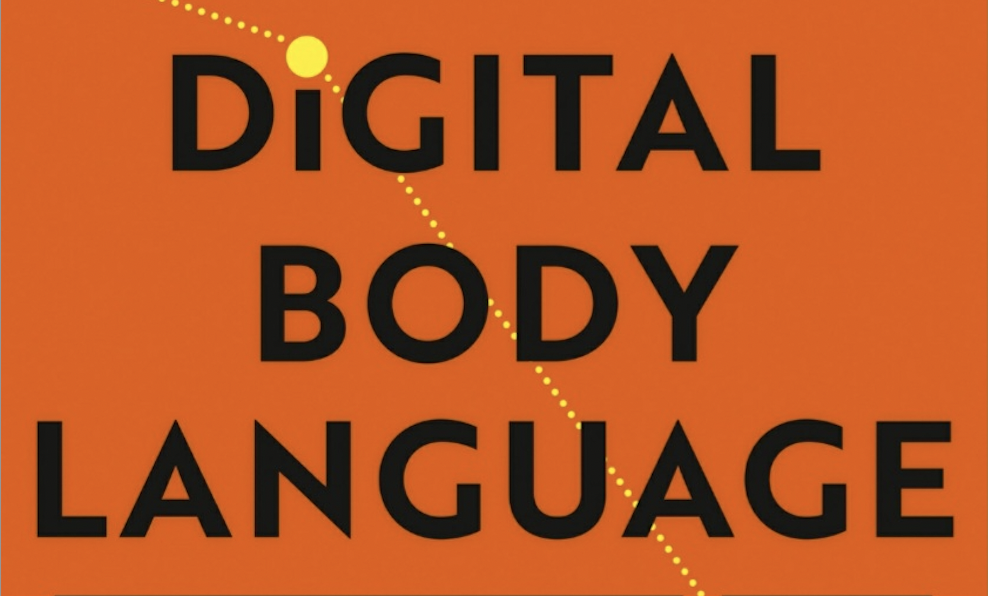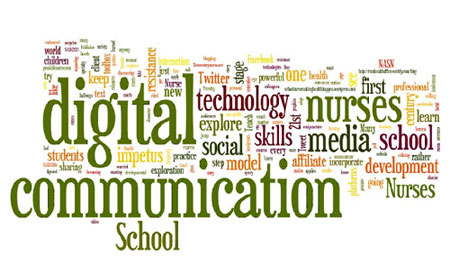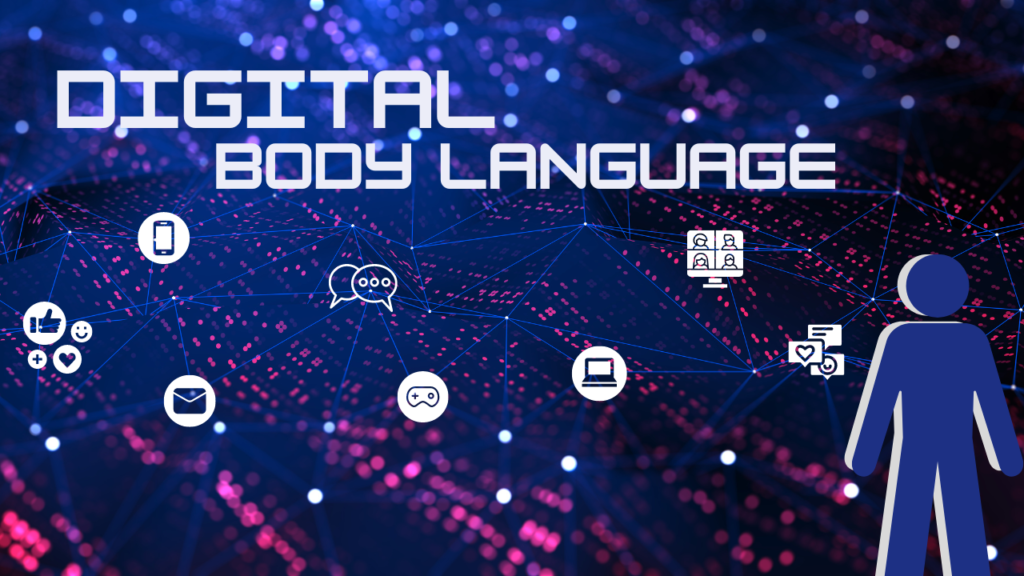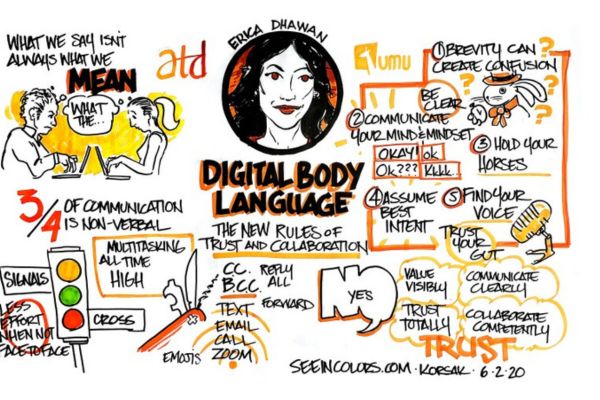Have you ever considered how your Virtual body language conveys your identity? While face-to-face body language mainly focuses on gestures, facial expressions, and tone of voice. Whereas, tools to analyze digital engagement convert these cues into written words, response times, and online activities. With screens usurping so many of our in-person interactions, grasping these nuances has never felt more imperative.
Why does this matter? Each email, text, or post is a drop of paint in your portrait, as seen by others. A smile or a nod can help billow a message in real life, but digital collaboration needs an immediate companion. How do we mend this gap to build trust, communicate clearly, and avoid misunderstandings? The solution is to learn digital body language. Let us see how you can use this skill to enhance better communication to build strong personal and work-related relationships.
The Top Signs of Good Digital Body Language
Have you thought that what you do in an effective online interaction may mean more about who you are than your about page? In a world where screens mediate communication, every move you make on the digital chess board has meaning. Let’s explore some FAQs about Virtual body language:
- Is Your Message in the Writing? Text-Based Communication: Your writing transforms your message. What level of professionalism does your tone have? Some might consider a “Got it” efficient; others dismiss it. Do you use emojis, punctuation (or lack thereof), or uppercase letters? These are considerations: “Well done!” is warmer than a great job.
- Does Your Timing in Responding Speak More Than What You Say? Timing can convey intention. Responding promptly may show concern or urgency, but does it seem too eager? If you take a while to answer, it can come across as you being busy or indifferent. But everything is time and place. A well-thought-out response at 2 AM may hold more weight than a hasty mid-afternoon reply.
- Engagement Metrics: What Your Digital Footprints Are Telling You Each touch has a footprint behind it. The various metrics tracking interest through clicks, shares, and time accrued by the content symbolize influence. Remember that consistent involvement establishes credibility in building trust online, while irregular appearance may need more determination.
- Unspoken Signals in Visual Talks: Are You Saying More than You Think? Whether on video chat or social media, the visuals communicate equally as your Text. Eye contact and facial expressions indicate attentiveness, while distractions signal disinterest. How you frame your background and camera can give a professional or unprofessional impression.
- Social Media Behavior: What Are You Storying Your Interactions As? Some actions you follow on social media: like, share, or comment, say something about yourself. Likes, shares, and comments will be support signals, granting increased propagation to messages you agree with. Do your connections mirror your passions and principles? The frequency and timing of your posts give more insights about you. Are you intentional and consistent in understanding digital communication signals, or is it just the thing to do? On the digital platform, you write your story through every interaction. Are you deliberately creating the narrative that others see?

Why Does Digital Body Language Matter?
Only through a screen is trust possible. So, yes, but with some clarity and purpose. In the paradigm of digital-first living, where email, IM, or video frequently replace in-person communication calls, every word and deed contributes to building and maintaining relationships.
Now, recall the last time you were online. Did it build trust or leave you puzzled? Doing the former requires intentional digital body language. Your email, message tone, or reply time can deepen connections or cause unnecessary misunderstandings. This is particularly important in remote work, where misunderstandings can cause tensions between co-workers or groups.
Besides, Digital communication strategies strengthen personal bonding and professional dealings. A detailed, warm message can cross the physical distance and endear itself to that person, while a casual or short text can push them miles away from you. When you perfect digital body language, every opportunity is embraced, and the atmosphere of trust and collaboration we understand very well can exist.

How Do We Improve Digital Communication Skills?
The spaces in between are the words we use in virtual body language; even the timing of your response to subtle signals, words, and general engagement patterns matters. Learning to read the signs can enable you to figure out what is going on inside your partner’s head, both their intentions and feelings.
For example, if someone takes a long time to reply, it could mean that they are busy, not interested, or sick and tired of how to respond. But context is critical. So, an extended break during business hours may be understandable, but the same lag in a severe negotiation would certainly signal alarm bells. Accurate reading of these signals lets you respond promptly and appropriately.
Differences drive difficulty in digitalization. While Cultural differences in online communication are not the only hindrances to digital adoption, they make a complicated situation even more complex. What is friendly and familiar in one culture might come off as too casual or even intrusive in another. For example, the overuse of emojis may come off as a friendly tone that is unprofessional to others. Understanding these differences helps you interact with a broader range of online spaces in a more attuned way.
Tools and analytics can also help deliver insights into digital body language. Click-through rates, time spent on content, and engagement trends tell you what your audience does with your messages. Once you have this knowledge, you can refine and adapt your communication for maximal impact.

What are you going to do about your digital body language?
Do you know if the messages you send are received as intended? Having that intention and consistently expressing it, even when it feels forced, is the start of improving your digital body language. Decoding online communication needs a clear understanding of all potential nonverbal cues in digital spaces.
Start with your writing, try to create clear, concise messages that reflect your voice and intent. Do not structure dismissively; ensure you warm it up with proper greetings or considerate closings. Examples: Instead of saying, “Let me know, ” try “Eager to hear back from you.” More personal, correct?
Another essential metric is response time. Quick replies might signify paying attention, but they might also be too much for some people if used excessively. On the flip side, delays could look unprofessional unless adequately contextualized. It balances these dynamics so you project care while not coming off as rushed and caring far too much.
Finally, demonstrate authentic interest. Why? Every personalized comment, every valuable interaction, and every tailored message proves time and again that all that effort did not go unnoticed. These simple actions, like liking a post, commenting on a conversation, or appreciating someone’s work, help build rapport and trust with people.

How Does Digital Body Language Affect The Workplace?
Supporting your statement: Pointing to face-to-face communication as the glue that holds remote teams together and engages them is false at its roots because so many people do just fine without it. They can, but only with focused attention on digital body language.
With personal contact feeling more diluted in virtual teams, digital body language becomes the glue that binds relationships together. Representing inclusion by being mindful of your emails, responding quickly enough, or including yourself in video calls goes a long way to inspire belonging.
And in particular, leaders need to exploit digital signals to instil or inspire confidence. Positive reinforcement and open communication build strong rapport with the team, which we all have missed out on during the pandemic days. The same goes for video meetings: how every leader carries themselves, makes eye contact with the camera, keeps a clean background, and paraphrases what others say to reflect active listening can boost or sink a team’s morale.
Digital communication has to be clear when working in a group. Digital body language is the foundation of trust and collaboration, whether brief project updates, polite follow-ups, or gentle nudges of recognition.
What Lies Ahead for Digital Body Language?
Could the digital manipulation of art radically change the AI’s interpretation of things? Technology will play a big part in the future of digital body language. Already, AI and analytics offer new means of decoding Digital behavior insights. Sentiment, engagement patterns, and conversation tone detectors clearly show how messages are perceived. For example, algorithms could forecast emotional states from the words used or identify disengagement when response rates drop.
AI in digital communication will also change as technology continues to evolve. New platforms offering real-time emotion tracking or AI-generated responses tailored to the individual may make communication dynamic. Yet, this also creates challenges for authenticity and privacy.
Being able to adapt is what makes you successful in this ever-changing landscape. Tools will keep revolutionizing, and how you may also, but are you prepared to merge your artistry with tools? When you find a way to balance technology through intentional communication, digital body language will be your co-pilot toward conquering the way we work, which is progressively remote.
Conclusion
Do you know what your digital footprint says? Every interaction, from the type of email to response time, adds to the narrative you create. Digital body language is more than a tool; it is the skill needed to develop trust, prevent misunderstandings, and succeed in this increasingly screen-mediated world.
Now that you know the basics, how can you use them? Start by being intentional. Take your time composing messages, be prudent in responses, and make sure that every online platform reflects who you are. Remember, you are communicating digitally, not just with your words. So, are you ready to hone your digital body language and develop more robust, deeper connections in your personal and professional life? The power of choice is yours.

